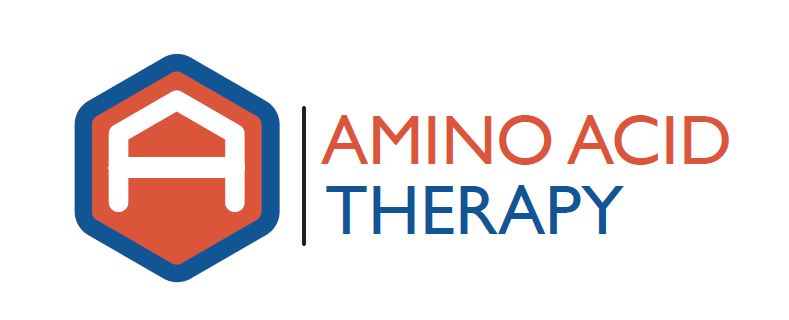 Many people are on medications that alter, mimic or in some way manipulate neurotransmitter levels in the body. These include stimulants, such as amphetamines (i.e., methamphetamine, “speed”, Adderall, Vyvanse, Dexedrine), ecstasy (MDMA), cocaine, and methylphenidate (i.e., Ritalin, Concerta); norepinephrine-reuptake inhibitors (i.e., Strattera, Edronax); norepinephrine-dopamine reuptake inhibitors (i.e., Wellbutrin, Zyman); selective serotonin reuptake inhibitors (i.e., Paxil, Prozac, Zoloft, Celexa, Lexapro and Luvox); triptans (i.e., Imitrex, Maxalt, Amerge, Zomig); sleep aids (i.e., Ambien, Lunesta); barbiturates (i.e., phenobarbital, Fioricet); benzodiazepines (i.e., Xanax, Klonopin, Valium, Lorazepam); MAO inhibitors (i.e., Azilect, selegiline, Nardil, Morplan); COMT inhibitors (i.e., Comtan, Tasmar); and carbidopa/levodopa (i.e., Sinamet, Rytary, Stalevo). While these medications may exacerbate or cause neurotransmitter imbalances in the body, most can be safely used along with amino acid therapy to achieve optimal neurotransmitter function.
Many people are on medications that alter, mimic or in some way manipulate neurotransmitter levels in the body. These include stimulants, such as amphetamines (i.e., methamphetamine, “speed”, Adderall, Vyvanse, Dexedrine), ecstasy (MDMA), cocaine, and methylphenidate (i.e., Ritalin, Concerta); norepinephrine-reuptake inhibitors (i.e., Strattera, Edronax); norepinephrine-dopamine reuptake inhibitors (i.e., Wellbutrin, Zyman); selective serotonin reuptake inhibitors (i.e., Paxil, Prozac, Zoloft, Celexa, Lexapro and Luvox); triptans (i.e., Imitrex, Maxalt, Amerge, Zomig); sleep aids (i.e., Ambien, Lunesta); barbiturates (i.e., phenobarbital, Fioricet); benzodiazepines (i.e., Xanax, Klonopin, Valium, Lorazepam); MAO inhibitors (i.e., Azilect, selegiline, Nardil, Morplan); COMT inhibitors (i.e., Comtan, Tasmar); and carbidopa/levodopa (i.e., Sinamet, Rytary, Stalevo). While these medications may exacerbate or cause neurotransmitter imbalances in the body, most can be safely used along with amino acid therapy to achieve optimal neurotransmitter function.
Medications and Amino Acids
Many of the common medications listed above – included SSRIs, SNRIs, and SNDRIs – do not actually increase the amount of neurotransitter in the system. They work by blocking the reuptake of neurotransmitter into the pre-synaptic neuron, creating a temporary state of increased neurotransmitter in the synapse. However, the body recognizes this increase, and thus increases the breakdown of these neurotransmitters (via the COMT and MAO enzymes). As the pre-synaptic stores of neurotransmitters are depleted over time, there is actually less and less neurotransmitter in the system. Once this gets to a critical stage, the drugs will often appear to “quit working” as there is not enough neurotransmitter left in the system for them to manipulate.
We have found that augmenting these medications with balanced levels of amino acids (equivalent to 4-8 NeuroReplete and 6 CysReplete/day) prevents this depletion and allows the medications to do what they were intended to do; in other words, the concurrent use of amino acids with these medications allows the medications to work more effectively.
For more information, please read Monoamine Depletion by Reuptake Inhibitors.
What about Serotonin Syndrome?
Very often, at some point in the discussion about the use of amino acids along with SSRI medications, a person will bring up the possibility of serotonin syndrome. Serotonin syndrome is a group of symptoms that may occur following the use of certain serotonergic medications or drugs. Symptoms include high body temperature, agitation, increased reflexes, tremor, sweating, dilated pupils, and diarrhea.
Serotonin syndrome is typically caused by the use of two or more serotonergic medications or drugs. This may include selective serotonin reuptake inhibitor (SSRI), serotonin norepinephrine reuptake inhibitor (SNRI), monoamine oxidase inhibitor (MAOI), tricyclic antidepressants (TCAs), amphetamines, pethidine (meperidine), tramadol, dextromethorphan, buspirone, triptans, ecstasy (MDMA), metoclopramide, ondansetron, or cocaine. Although there is a theoretical basis for assuming that L-tryptophan and/or 5-HTP could also induce serotonin syndrome when administered with the above medications, I have found no documented cases of serotonin syndrome in the literature with the use of L-tryptophan or 5-HTP and none when using balanced amino acid therapy as described in this site.
That said, I have seen some of these symptoms in people that take medications along with amino acids; however,in every case, the symptoms presented corresponded with known side effects of the medication itself. In other words, by improving the efficacy of the medication (the desired effect) it appears that the side-effects (the undesired effects) of the medications may also increase. Thus, it appears the the concomitant use of amino acids and medications helps the drugs work better; unfortunately, this means taking the good with the bad. In each case that we’ve seen, working with the prescribing physician to lower the medication dosing has resolved the symptoms.
When NOT to Use Medications Along with Amino Acids
The one class of medications that I would exercise extreme caution when using amino acid therapy would be MAO inhibitors, including Azilect, selegiline, Nardil, and Morplan. These medications can dramatically affect the metabolism of monoamines – including serotonin, dopamine, norepinephrine and epinephrine – and concomitant use could have many, many unwanted side effects. Luckily, this class of medication has fallen out of favor in the medical community, so it is a rare occurrence to find them still used in practice.
In addition, it is inadvisable to use amino acid therapy along with carbidopa/levodopa combinations. The reason for this is that the carbidopa appears to severely deplete the body of vitamin B6, which is an essential nutrient in the synthesis of serotonin and dopamine. In fact, we have found that discontinuation of carbidopa/levodopa combinations is essential to achieve the long term benefits we are able to achieve using amino acids in cases of Parkinson’s disease.
For more information on this, please read the following:
- Parkinson’s disease: carbidopa, nausea, and dyskinesia
- The Parkinson’s disease death rate: carbidopa and vitamin B6
- Amino acid management of Parkinson’s disease: a case study


Have you got the case study for the Parkinson’s case?
Here you go: https://www.dovepress.com/amino-acid-management-of-parkinsonrsquos-disease-a-case-study-peer-reviewed-article-IJGM –
Dr. Chad